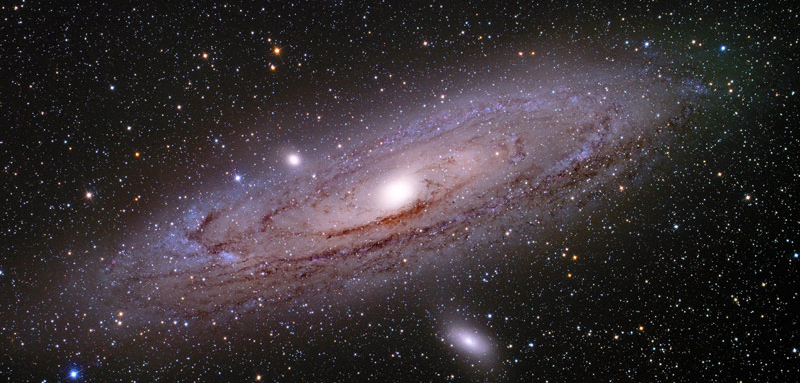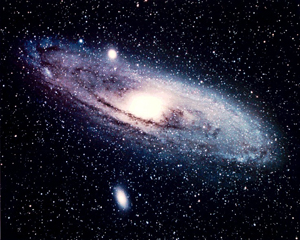
To locate Andromeda, look to the northeast just after sunset. You will need a very dark clear sky and preferably a new moon. The galaxy looks like a dim haze of lights, larger in diameter than a full moon.
Abd-al-Rahman Al Sufi of Persia first discovered Andromeda in 964 A.D. He called Andromeda “a little cloud” and wrote about the galaxy in his book, "Book of Fixed Stars." In Europe Al Sufi's observations were not known and Simon Marius rediscovered Andromeda in 1612 with a moderate telescope.
Andromeda is one of over 30 galaxies that make up our local group. These galaxies are spread out and have approximately a 10 million light year diameter. The group's center is thought to be somewhere between the Milky Way and Andromeda. These two galaxies are by far the most massive of the local group. Their strong gravity acts upon smaller surrounding galaxies and the result is an accumulated system of satellite galaxies.
Although Andromeda is considered to be close to our own galaxy, it is actually around 2.5 million light years away. Other galaxies in our local group are between 88,000 light years and 8 million light years away from the Milky Way. There are other groups of galaxies in addition to our own local group, the closest being the Virgo Cluster. This group contains over 2000 galaxies and dominates our galactic neighborhood. Most experts estimate the edge of the Virgo cluster to be at least 60 million light years away.
With the sheer size of our known universe, the possibility of life beyond our own planet is astonishing. The Milky Way alone is estimated to have between 100 and 400 billion stars. Multiply this by the millions (if not billions) of other galaxies in the universe and it's hard for any person to truly grasp the size and dimension of our universe. New planets are being found every day. It's only a matter of time until life beyond our own planet is found.
Update August 11, 2018
In the northern hemisphere August and September are the best months to view Andromeda. The best viewing months in the southern hemisphere are October through December. It can be seen with the naked eye, but with just a pair of binoculars the the beautiful details of Andromeda begin to emerge.











